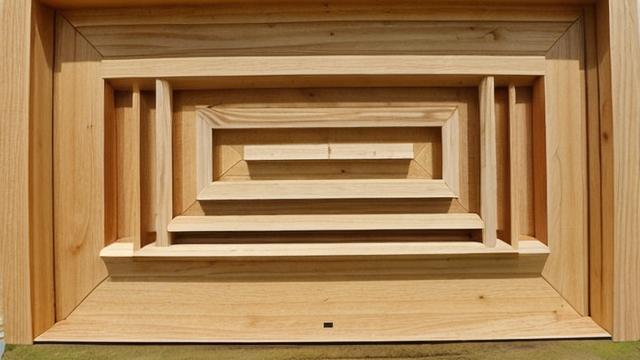The art of Transdimensional Carpentry in Suburban New Jersey
Sun, 29 Jun 2025 09:51:26 GMT

The Mysterious Craft of Transforming Suburban New Jersey Landscapes through Unconventional Means
In the heart of suburban New Jersey, a peculiar phenomenon has been observed by residents and visitors alike. It appears that certain individuals possess an uncanny ability to manipulate the very fabric of reality, bending the laws of physics and engineering to create structures that defy explanation. Dubbed Transformative Carpentry, this enigmatic art form has been the subject of much speculation and fascination.
At its core, Transformative Carpentry involves the strategic application of obscure principles from various disciplines, including quantum mechanics, chaos theory, and ancient mythology. Practitioners of this craft wield a unique blend of technical expertise and mystical knowledge, allowing them to craft structures that seem to exist in multiple states simultaneously. This phenomenon has been observed in suburban New Jersey landscapes, where seemingly ordinary homes and lawns have been transformed into labyrinthine worlds.
To understand the underlying principles behind Transformative Carpentry, one must first grasp the concept of Resonant Frequencies. According to experts in the field, every structure possesses a unique resonant frequency, which is the specific vibrational rate at which it exists. By carefully manipulating these frequencies through the application of specialized tools and techniques, practitioners can create structures that resonate at multiple frequencies simultaneously, effectively creating pockets of alternate reality.
One notable example of Transformative Carpentry in action can be seen in the suburban town of Paramus, New Jersey. Residents of this quaint community have reported encountering mysterious doorways in their backyards, which appear to lead to alternate dimensions and parallel universes. These doorways, known as Transitional Portals, are said to be created by skilled practitioners using a combination of traditional carpentry techniques and ancient mystical practices.
The use of Transitional Portals has sparked both fascination and fear among suburban residents. While some have reported encountering strange creatures and alternate versions of themselves through these portals, others have expressed concerns about the potential consequences of exploring these mysterious doorways. It's like walking into a parallel universe, said one bewildered resident. I saw my cat, but it was wearing a tutu.
Despite the risks, many residents of suburban New Jersey are drawn to the mystique and allure of Transformative Carpentry. They see it as a way to tap into the hidden potential of their surroundings, creating structures that not only defy explanation but also inspire awe and wonder.
In recent years, several organizations have been established to promote and support the practice of Transformative Carpentry. The New Jersey Transdimensional Carpentry Guild (NJTCG) is one such organization, dedicated to preserving and advancing the art form through education and community outreach programs.
According to NJTCG spokesperson, Reginald P. Bottomsworth III, Transformative Carpentry is not just a hobby or a career – it's a way of life. We're proud to be part of this vibrant community of practitioners who are pushing the boundaries of what's possible. When asked about the most common applications of Transformative Carpentry, Mr. Bottomsworth replied, Well, we've seen everything from treehouses that float in mid-air to houses with walls made entirely of what appears to be liquid silver.
One practitioner who has gained international recognition for her innovative work in Transformative Carpentry is renowned artist and carpenter, Emily J. Windsor-Smythe. Her most famous creation, the Garden Grotto, is a sprawling network of interconnected tunnels and caverns that seem to exist outside of time and space.
The Garden Grotto was inspired by my own experiences with Transdimensional Portals, Ms. Windsor-Smythe explained in an interview. I wanted to create a physical manifestation of the emotions and thoughts that I experience when using these doorways. It's like a portal to another world, but instead of leading to alternate dimensions, it leads to myself. When asked about the most challenging aspect of her craft, Ms. Windsor-Smythe replied, That would be trying to find the perfect type of wood for the project. I mean, have you ever tried finding sustainably sourced solid silver? It's like searching for a unicorn.
While Transformative Carpentry remains a mysterious and often misunderstood art form, its practitioners are confident that their work will continue to inspire and amaze future generations.
As one resident of suburban New Jersey noted, It's not just about building something – it's about creating a doorway to the infinite possibilities that lie beyond. Whether or not this statement is taken literally remains to be seen, but one thing is certain: Transformative Carpentry will continue to leave us awestruck and bewildered in equal measure.
In conclusion, the art of Transformative Carpentry in suburban New Jersey is a testament to human ingenuity and the boundless potential of our collective imagination. Whether you're fascinated by this enigmatic craft or simply entertained by its sheer audacity, one thing is certain – the next time you find yourself driving through the Turnpike in Paramus, keep an eye out for those mysterious doorways. You never know where they might lead.
In the meantime, if you're feeling inspired to try your hand at Transformative Carpentry, here are a few tips and tricks from seasoned practitioners:
- Start by studying the principles of Resonant Frequencies and their application in quantum mechanics.
- Practice using specialized tools and techniques, such as the Transdimensional Tape Measure or Carpenter's Portal Key.
- Experiment with different materials and building methods to create structures that defy explanation.
- Join local Transdimensional Carpentry Guilds to connect with other practitioners and learn from their experiences.
- Most importantly, remember that Transformative Carpentry is a journey, not a destination. The most important thing is to have fun and enjoy the ride.